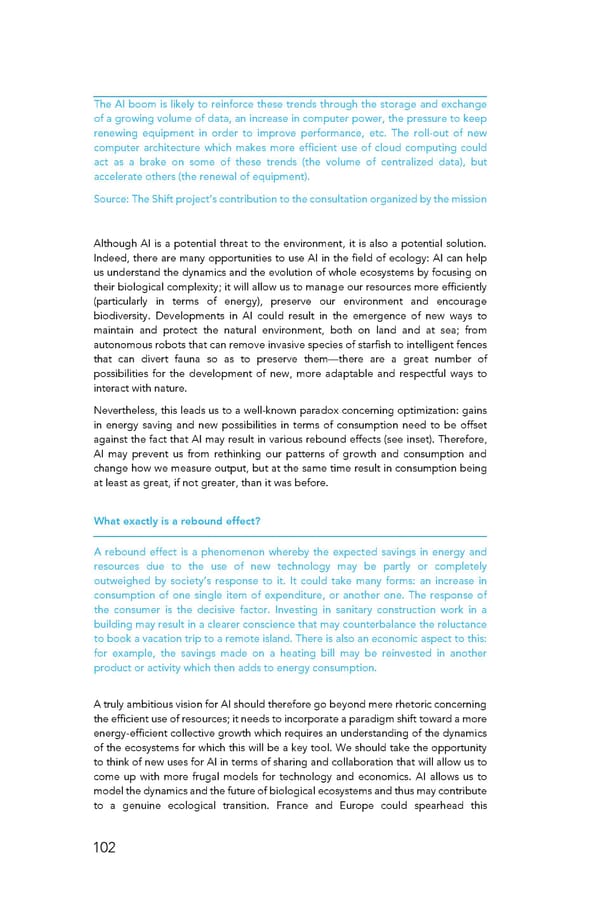The AI boom is likely to reinforce these trends through the storage and exchange of a growing volume of data, an increase in computer power, the pressure to keep renewing equipment in order to improve performance, etc. The roll-out of new computer architecture which makes more efficient use of cloud computing could act as a brake on some of these trends (the volume of centralized data), but accelerate others (the renewal of equipment). Source: The Shift project’s contribution to the consultation organized by the mission Although AI is a potential threat to the environment, it is also a potential solution. Indeed, there are many opportunities to use AI in the field of ecology: AI can help us understand the dynamics and the evolution of whole ecosystems by focusing on their biological complexity; it will allow us to manage our resources more efficiently (particularly in terms of energy), preserve our environment and encourage biodiversity. Developments in AI could result in the emergence of new ways to maintain and protect the natural environment, both on land and at sea; from autonomous robots that can remove invasive species of starfish to intelligent fences that can divert fauna so as to preserve them—there are a great number of possibilities for the development of new, more adaptable and respectful ways to interact with nature. Nevertheless, this leads us to a well-known paradox concerning optimization: gains in energy saving and new possibilities in terms of consumption need to be offset against the fact that AI may result in various rebound effects (see inset). Therefore, AI may prevent us from rethinking our patterns of growth and consumption and change how we measure output, but at the same time result in consumption being at least as great, if not greater, than it was before. What exactly is a rebound effect? A rebound effect is a phenomenon whereby the expected savings in energy and resources due to the use of new technology may be partly or completely outweighed by society’s response to it. It could take many forms: an increase in consumption of one single item of expenditure, or another one. The response of the consumer is the decisive factor. Investing in sanitary construction work in a building may result in a clearer conscience that may counterbalance the reluctance to book a vacation trip to a remote island. There is also an economic aspect to this: for example, the savings made on a heating bill may be reinvested in another product or activity which then adds to energy consumption. A truly ambitious vision for AI should therefore go beyond mere rhetoric concerning the efficient use of resources; it needs to incorporate a paradigm shift toward a more energy-efficient collective growth which requires an understanding of the dynamics of the ecosystems for which this will be a key tool. We should take the opportunity to think of new uses for AI in terms of sharing and collaboration that will allow us to come up with more frugal models for technology and economics. AI allows us to model the dynamics and the future of biological ecosystems and thus may contribute to a genuine ecological transition. France and Europe could spearhead this 102
 For a Meaningful AI - Report Page 102 Page 104
For a Meaningful AI - Report Page 102 Page 104